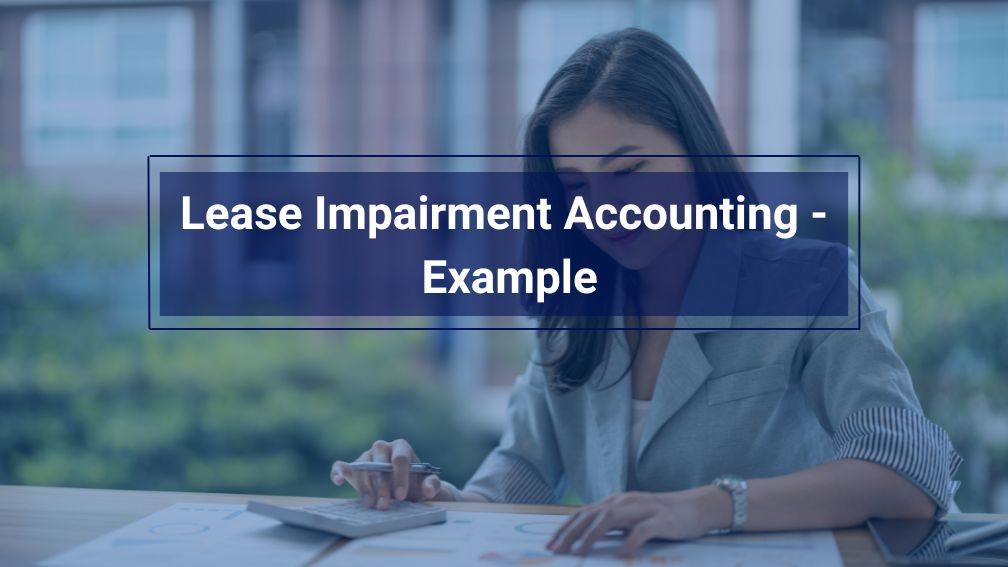Lease Impairment Accounting
Last Updated on May 16, 2024 by Morgan Beard
When a company leases an asset like office space, retail space or equipment like delivery trucks or company laptops, it records a right-of-use asset and lease liability on its balance sheet under the current lease accounting standards. But what happens if circumstances change and the right-of-use asset becomes impaired? Enter the need for lease impairment accounting, which is when the ROU asset has experienced a decrease in value making the fair market value less than the carrying value. Read our blog on Lease Impairments Impact on ROU Assets, to learn more about this topic.
Impairment Indicators
Under ASC 842 for lessees and ASC 842 for lessors, companies are required to review their right-of-use assets for impairment whenever indicators are present. Some potential impairment indicators for right-of-use assets include:
- A significant decrease in the asset’s fair value
- A significant change in how the asset will be used
- Worse than expected operating performance for the asset
- Plans to sublease or exit the lease
If any impairment indicators exist, the lessee must test the right-of-use asset for its recoverable value. The recoverable value is the higher of the asset’s fair value or its value in use based on discounted cash flows.
Calculating the Recoverable Value
If the recoverable value is less than the carrying value of the right-of-use asset, the lessee records an impairment equal to the difference. The impairment loss is recorded as part of earnings before interest, taxes, depreciation and amortization (EBITDA) and a reduction to the right-of-use asset.
However, the lease liability balance cannot be reduced as the outstanding lease payments will still need to be made over the remaining lease term.
Practical Lease Impairment Accounting Example:
For example, say a company leases office space with a 10-year remaining lease term. The right-of-use asset has a carrying value of $5 million and the lease liability is $6 million. Due to plans to downsize operations, the recoverable value of the right-of-use asset is calculated as $3.5 million.
In this case, the company would record a $1.5 million impairment loss ($5 million carrying value – $3.5 million recoverable value). The $1.5 million impairment charge would be expensed through EBITDA on the income statement.
The $1.5 million impairment loss would also be recorded by reducing the right-of-use asset. The right-of-use asset would be written down from $5 million to $3.5 million.
Implementing Robust Processes
Lease impairment accounting requires careful monitoring and documentation of potential impairment indicators. Companies should have robust processes and controls in place to properly review and record any required impairments to their right-of-use assets on a timely basis.
This includes implementing procedures such as:
- Maintaining a lease management system or software to track all leased assets, lease data, and potential impairment triggers
- Designating personnel responsible for monitoring leasing activities and identifying possible impairment indicators
- Developing policies that clearly define what qualifies as an impairment indicator per the accounting standards
- Instituting periodic impairment review procedures and documentation requirements
- Implementing approvals and oversight from accounting/finance management on impairment testing performed
- Integrating impairment testing into budgeting and forecasting processes to capture changes that could impact recoverable values
- Training accounting and operational staff on lease impairment accounting and processes
- Conducting periodic internal audits of lease impairment processes and calculations
Having such rigorous processes and controls is critical, as improper accounting for right-of-use asset impairments can lead to material misstatements of a company’s financial position and results. It requires cross-functional coordination between accounting, legal, real estate, and operational teams that manage an organization’s leased assets.
Lease Accounting Resources
Check out our resource hub. We have the templates, spreadsheets, and calculators to help you manage entire lease lifecycle.
